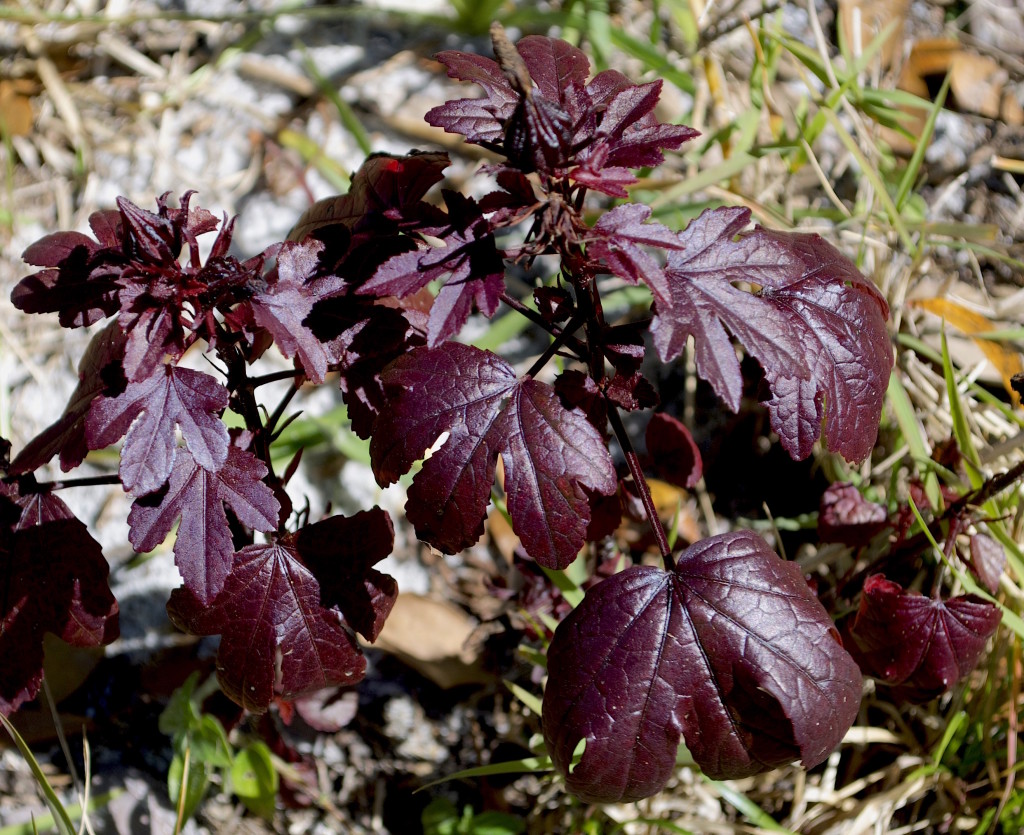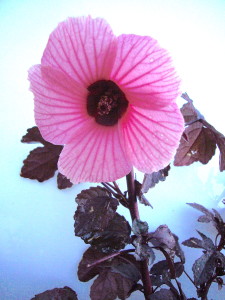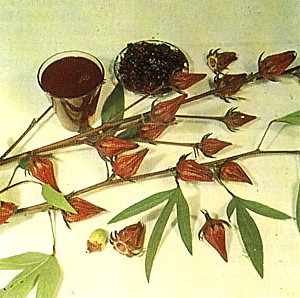I can’t do a stir-fry without visiting a tree. Actually, the False Roselle is a shrub not a tree but the point is made. Its leaves have just the right color, taste and texture for stir-fries and salads.
There’s hardly a hibiscus that’s isn’t edible in some way. Several are better than others. The False Roselle, or Hibiscus acetosella (hye-BISS-kus uh-set-o-SEL-luh) is one of the best. Its dark red leaves are tart, sorrelesque. They harvest easily, chop up easily, don’t loose bulk, color or flavor when cooking.
The first thought most plant people have when they see a False Roselle is that it looks like a red maple. On closer inspection the leaves are a different shape, and the False Roselle is a darker red, but the resemblance is there, at least to northerners. Its pink flowers are edible as well, but they are more eye candy than a palate pleaser, being nearly tasteless. The flowers usually go in salads.
One cannot mention the False Roselle without introducing the real Roselle, left. Hibiscus sabdariffa (hye-BISS-kus sab-duh-RIF-fuh) is also known as the “Florida Cranberry” the “Cranberry Hibiscus” and the Jamaican Sorrel. A tart juice can be made from its fat calyxes and it’s something of a tradition in the West Indies. Many posters on the Internet get these two hibiscus mixed up, but there is no need for it. The False Roselle ( H. acetosella) has maple-esque red leaves — older with an undertone of green — whereas the Cranberry Hibiscus (H. sabdariffa) has lance-shaped, green leaves. They look quite different.
The shrubs can take a light freeze and will come back from roots in the spring. In cold climates they will have to be a potted plant. In my yard they tend to died after five or six years but are always reseeding and sprouting so it’s not much of an issue. Hibiscus means hibiscus or slimy or sticky, and acetosella means “a little sour.” Sabdariffa is a variation of the West Indian name.
Green Deane’s “Itemized” Plant Profile: False Roselle
IDENTIFICATION: Upright and shrubby, leaves ovate to lobed, red to deep burgundy, to dark reddish green. Flowers funnel shaped, usually pink but can be yellow or red. Some cultivars don’t flower. Mature plants can split and fall over.
TIME OF YEAR: Year round in warm climates
ENVIROMENT: Plenty of sun, water, good soil and heat. They don’t like it dry or wet.
METHOD OF PREPARATION: Leaves raw or cooked, blossom raw or cooked though they tend to disappear when cooked.




